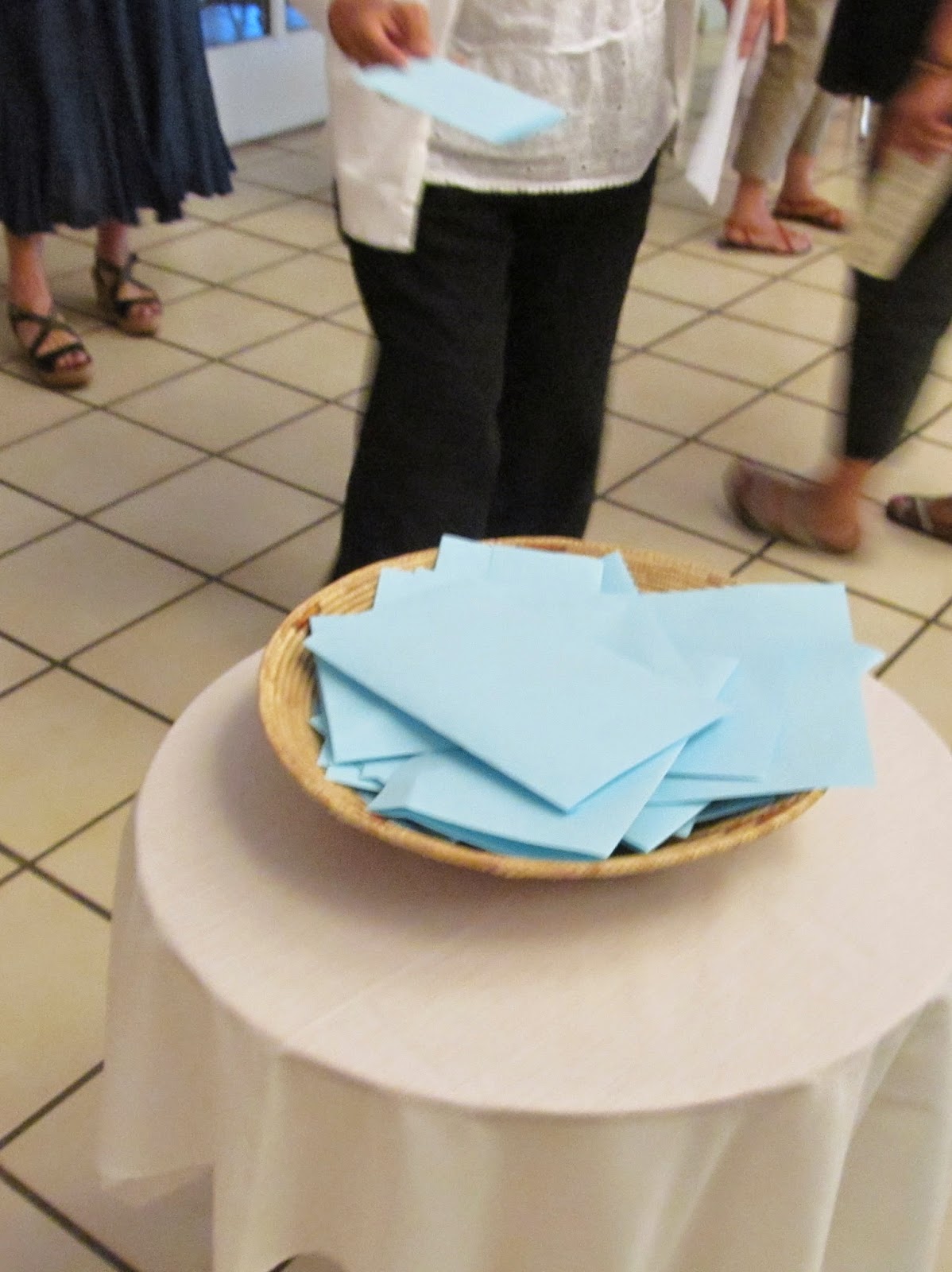 |
| Participants listen to speaker Ruth Hoffman |
Both sessions were intended to provide information about hunger in New Mexico, although the first gathering back in February was also set up to collect feedback on how the coalition should proceed with its work.
This latest session--the first of several planned programs around Albuquerque over the next several months--featured a showing of the documentary A Place at the Table, a presentation by Ruth Hoffman of the Lutheran Advocacy Ministry-New Mexico, a couple of interactive sessions and prayers and reflections.. Here are a couple of highlights.
A Place at the Table
This was the fourth time I had viewed A Place at the Table. People who see a movie multiple times often tell you that they see something new each time. The one thing I noticed this time around was that Janet Poppendieck, one of the experts/advocates interviewed in the documentary had traveled to our state capital this past October to make a presentation at a conference on Santa Fe's food future.
While the stories in A Place at the Table were now very familiar to me, a handful in the audience at Holy Rosary had not seen this powerful documentary and the message that 50 million people in our country—one in four children—don’t know where their next meal is coming from. This promo for the documentary is a call to action. "Ultimately, A Place at the Table shows us how hunger poses serious economic, social and cultural implications for our nation, and that it could be solved once and for all, if the American public decides — as they have in the past — that making healthy food available and affordable is in the best interest of us all," says
 |
| Photo: from Matt Wilkie's blog |
One of the interactive sessions at the Hunger 101 session at Holy Rosary was described as a "snack activity." This was an a modified version of the Hunger Banquet, where participants represent various countries around the globe and receive a meal that corresponds to that country’s economic status. Instead of a meal, the event recreated the experience with snack foods for seven participants: one fancy chocolate bar, one bag of chips, two saltine crackers, two portions of a dried tortilla and one mud pie.
The mud pie was not the sweet snack popular in the South, but a different kind of item (and I don't know if you can even call it food). Here is a description from National Geographic News.
It was lunchtime in one of Haiti's worst slums, and Charlene Dumas was eating mud. With food prices rising, Haiti's poorest can't afford even a daily plate of rice, and some must take desperate measures to fill their bellies. Charlene, 16 with a month-old son, has come to rely on a traditional Haitian remedy for hunger pangs: cookies made of dried yellow dirt from the country's central plateau.Hunger in New Mexico
The mud has long been prized by pregnant women and children here as an antacid and source of calcium. But in places such as Cité Soleil, the oceanside slum where Charlene shares a two-room house with her baby, five siblings, and two unemployed parents, cookies made of dirt, salt, and vegetable shortening have become a regular meal.
Ruth Hoffman, offered a modified version of the presentation that she made in February. She reminded participants of the statistics that we already know (or should know): Our state has a child poverty rate of 27% (140,000 children) and a senior poverty rate of 12% (35,000 seniors)..A total of 66% of students in New Mexico are eligible for free or reduced meals... Some 43% of the families in our state are "house-burdened," meaning that they spend over 30% of their income on housing.
There was a discussion of solutions that can be taken immediately, such as expanding school meals, increasing access to healthy and affordable food and removing barriers for people to access food stamps and other types of public assistance. Many of the systemic problems related to poverty and injustice were also addressed, such as: a low minimum wage, wage theft and other economic issues.
 Commitment and Prayer
Commitment and PrayerThe program ended with an opportunity for participants to commit to take action. (The commitments were written on a blue piece of paper and offered in prayer)
And we ended with the following prayer from Prayer Without Borders, Celebrating Global Wisdom
To Have Hope is To Live
To have hope is to believe that history continues open to the dream of God and to human creativity
To have hope is to continue affirming that it is possible to dream a different world, without hunger, without injustice, without discrimination.
To have hope is to be a courier of God and courier of men and women of good will, tearing down walls, destroying borders, building bridges.
To have hope is to believe that life wins over death.
To have hope is begin again as many times as necessary.
To have hope is to believe that hope is not the last thing that dies.
To have hope is to believe that hope cannot die,that hope no longer dies.
To have hope is to live.
-Missionary Sisters of St. Charles Borromeo -Scalabrinians Honduras



No comments:
Post a Comment